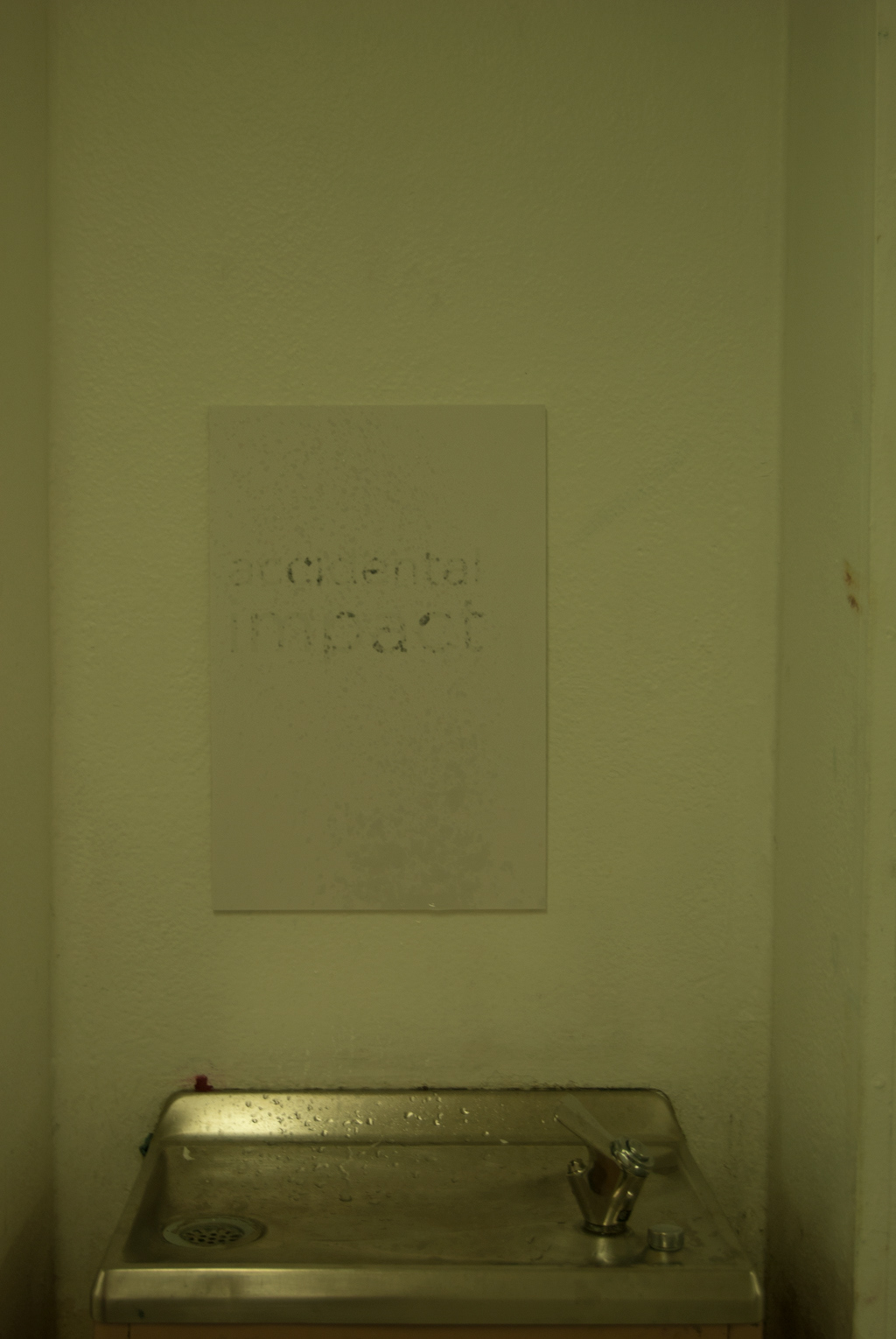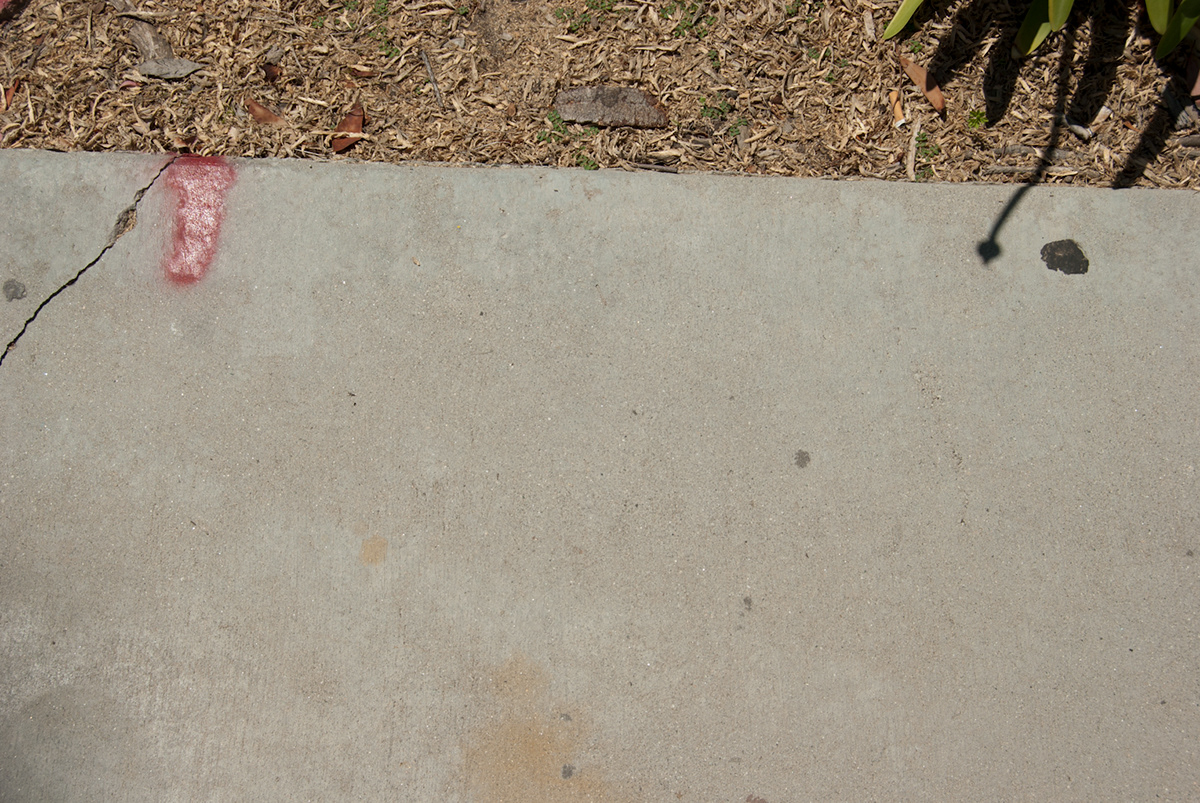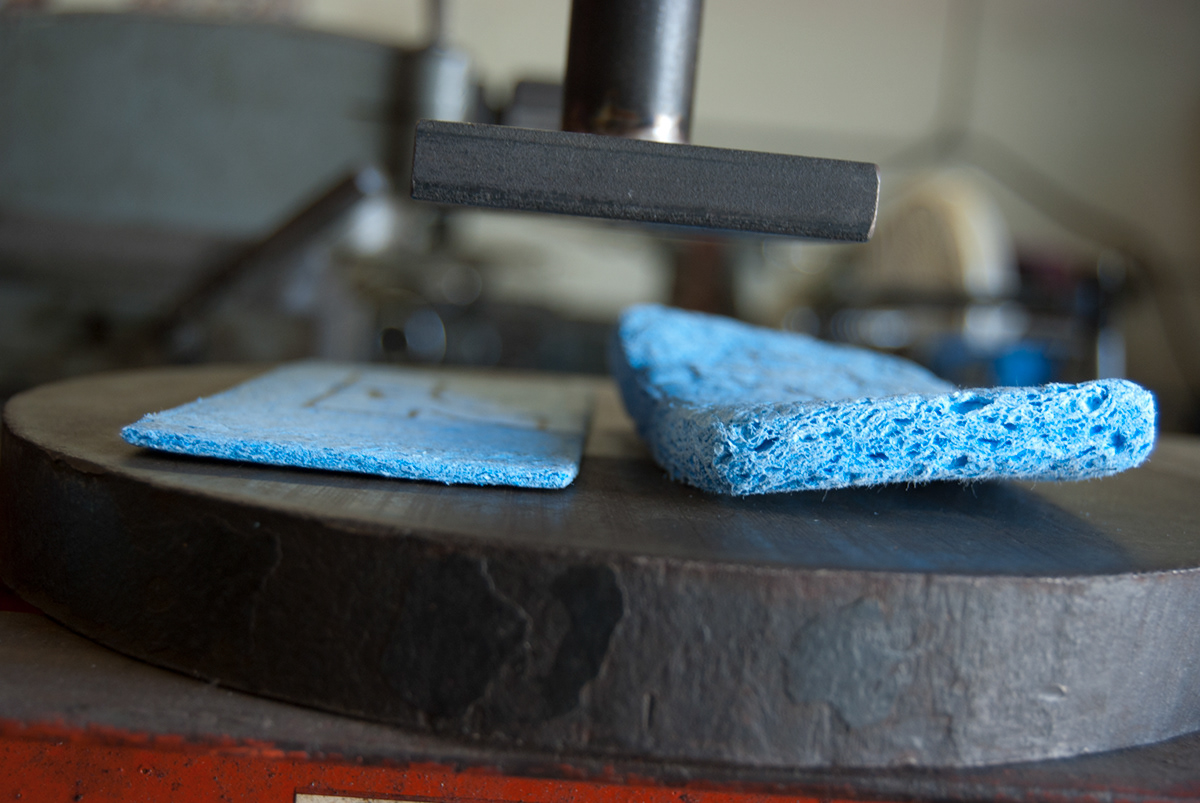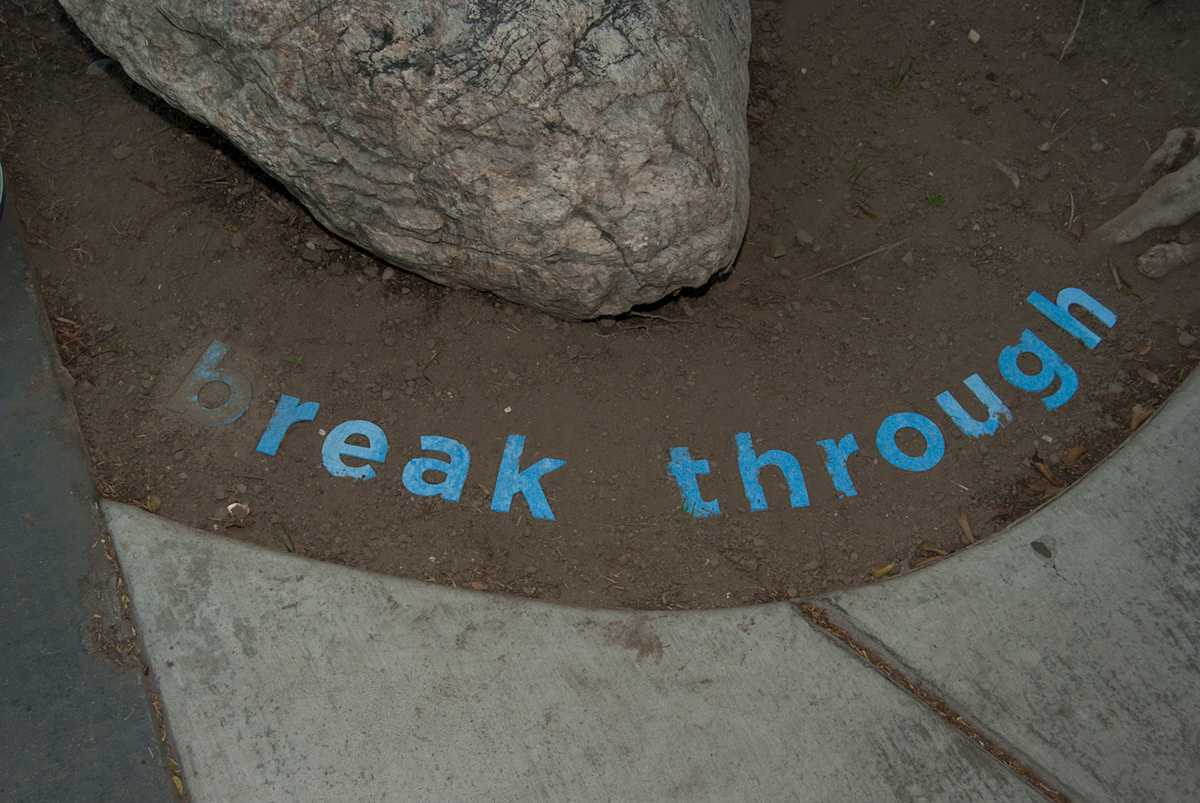Entropy
Happening in CSULB campus
Happening in CSULB campus
In our exploration of entropy, we felt the need to explain the chaos theory that everything in the universe tends to move toward disorder. It is natural human condition to take for granted this meaning. We are taught from birth of what things should look like, and when they don’t look like that, there is something wrong with them. In comes the notion of disorder and chaos. The dusty car is a car that is in disorder; the dirty apartment is one that is experiencing chaos, etc.
What our exploration does is flip this idea on end in a typographic manner. Instead of having nature create disorder, we use man-made mechanisms to create it. Thus the idea of “disorder” becomes a nuisance that is created by the ones who view it as a nuisance. In terms of typography, our applications become legible through different areas of “man-made disorder”.
What our exploration does is flip this idea on end in a typographic manner. Instead of having nature create disorder, we use man-made mechanisms to create it. Thus the idea of “disorder” becomes a nuisance that is created by the ones who view it as a nuisance. In terms of typography, our applications become legible through different areas of “man-made disorder”.
Our “water jewel” application uses the sprinklers to expose the message. The crystals, which are made of a super-absorbent polymer, collect enough water to grow ten times their original size. Thus, a sprinkled stencil of the word “flourish” might not be legible in the dry heat, but once the sprinklers are turned on, the word becomes amazingly apparent.



With irony being a central force in our applications, we felt it was necessary to stage the sponges as complete man-made disorder. By placing synthetic sponges in natural dirt, and exposed by man-made sprinklers, the complete process is disorder with a human touch.
Dug into the dirt, the compressed sponge letters were completely hidden until the sprinkler system was activated. When water interacted with the dirt, the sponges grew, and “broke through” the dirt.
Dug into the dirt, the compressed sponge letters were completely hidden until the sprinkler system was activated. When water interacted with the dirt, the sponges grew, and “broke through” the dirt.




Broken machines are the quintessential example of entropy being a product of time. The 2nd floor water fountain between rooms 204 and 202 is widely known as having a temperamental spray, shooting water in wrong directions. We took advantage of this subject by placing a printed message on the wall that attracts most water. Having printed in the opposite side of the paper in true black, the interaction of water on the paper made the text visible, with the colors of CMY alongside the black. With every spray of the fountain by students, the message of “accidental impact” became more and more visible.



While the door handle and water fountain applications used human interaction to ignite entropy, our cement application used human materials to express disorder. By spraying down Clear Coat spray paint on cement, a hidden message would appear only when water is put in that cemented area. For example, rainy days and errant sprinklers would expose the message, as the clear coat restricts water from soaking into the cement. This fleeting message, translated by “momentary clarity” visualizes the restrictions of natural process by man-made products.






50 years of student use in the Liberal Arts buildings has taken immense visual tolls. Most apparent is the effect of human oils on the building, seen on door handles, tabletops, and the linoleum floors. What isn’t apparent is the reality that the decay of this building is intrinsically tied to the human use of it. In this application, we threw down a stencil of spray glue on the exterior door handle facing the central quad. Over short period of 2 days, the constant touching of the handle by thousands of students collected enough dirt and oils to expose the message of “contaminate normality”. The message taking the stance that what many take for granted (opening a door) is actually having a chaotic effect on the building.


The process was just as interesting as the results...



















